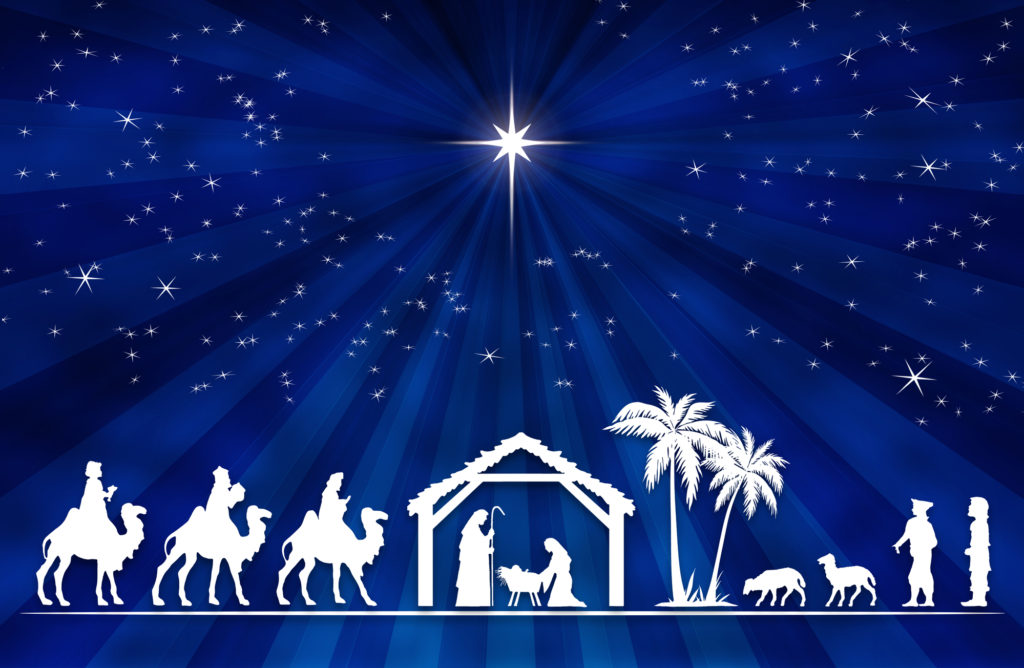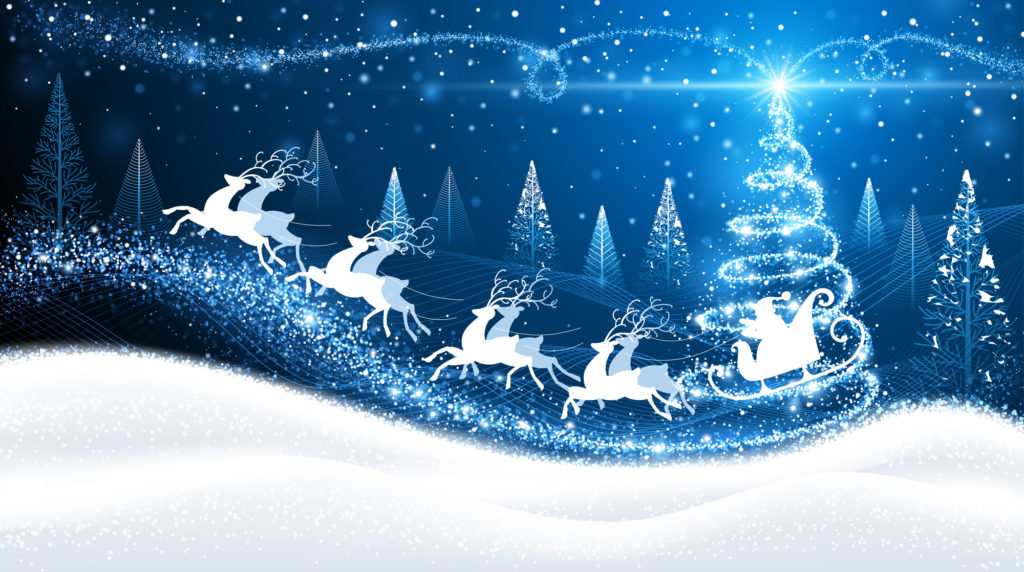Did you ever wonder where our tradition of celebrating Christmas comes from? How did Santa and Jesus end up sharing Christmas?
I definitely enjoy questioning some of the things we do as a society, including our traditions.
Traditions are usually passed on to us by our parents, and many of us never really ask ourselves where they come from or why we are celebrating certain events the way we do. But maybe we should!
Christmas is one of these traditions. I have already posted about Halloween, Thanksgiving, and Easter. So here is to complete my series.
Jesus and Christmas
Christmas is an annual religious and cultural celebration held on December 25th, commemorating the birth of Jesus Christ.

The biblical account of the birth of Jesus
We have all heard the story of Mary, a young woman from Nazareth, who was visited by angel Gabriel. Gabriel told Mary that she would have a son named Jesus and that he would be the Son of God.
Mary and Joseph had to travel to Bethlehem for a census in their hometown. When Mary and Joseph arrived in Bethlehem there were no places to stay. So they settled down on the hay in a stable in the middle of animals and Jesus was born there.
During this time, an angel appeared to shepherds who were watching their flocks in the fields near Bethlehem. The angel told them the good news of the birth of the Savior.
Three wise men also saw the brilliant star in that sky that rested over where Jesus was born. They traveled from a distant eastern country to find the new king right where the star pointed.
What are the origins of the nativity story?
The nativity story was pieced together from many different accounts. There is no single core narrative. The Gospel of Matthew mentions the Wise Men and the Star of Bethlehem, while the Gospel of Luke describes awestruck shepherds and says that Jesus was born in a stable because all the inns were full. The presence of the animals stems from early Christian teachings that even animals recognized Jesus as the Son of God.
Why December 25th?
The date of birth of Jesus is not stated in the gospels or in any historical reference, but most biblical scholars assume a year of birth between 6 and 4 BC. The Roman Catholic Church chose Dec. 25 as Christ’s birth date in the 4th century. They likely wanted the date to coincide with existing pagan festivals honoring Saturn (the Roman god of agriculture) and Mithra (the Persian god of light). That way, it became easier to convince Rome’s pagan subjects to accept Christianity as the empire’s official religion
To define Christ’s actual date of birth, scholars look to when the Star of Bethlehem might have appeared.
What is the Star of Bethlehem?
There are various theories. Some say it was a nova, or the explosion of a white dwarf star, recorded by Chinese sky-watchers in 5 B.C., while others suggest it was the planet Jupiter, which would have appeared to be drifting westward in the sky. Astronomer John Mosley of the Griffith Observatory in Los Angeles recently theorized that the Star of Bethlehem was actually a convergence of Jupiter and Venus that took place on June 17 in 2 B.C.
Santa and Christmas
The way of celebrating Christmas varies from country to country. Some customs have Christian origins, and others are non-religious. Some popular modern customs are giving presents, exchanging Christmas cards, creating an Advent calendar, setting up Christmas decorations, playing Christmas music, viewing a nativity play, going to a church service, and preparing a special meal.
And then there is Santa Claus, the magical Christmas gift giver said to bring presents to all of the well-behaved children in the world on the single night of Christmas Eve. He is supposed to accomplish this with the help of his elves, who make toys in his workshop at the North Pole and his flying reindeer, who pull his sleigh.

Who is Santa?
The modern Santa Claus grew out of traditions surrounding the historical Saint Nicholas, a fourth-century Greek Christian bishop. Nicholas was famous for his generous gifts to the poor.
There are a wealth of stories about Nicholas’ life – many of them emphasize his kindness and generosity. After his death on December 6, a tradition of gift giving was begun in his honor.
St. Nicholas Day is still observed on December 6 in many countries, but in others, America included, the practices associated with the day were combined with Christmas. It seemed natural to many Christians that a holiday celebrating giving would merge with the birth of Christ, the greatest gift ever given to the world.
Traditions and what to pass on to our children
One can question the reasons parents and society try so hard to convince young children of the existence of Santa Claus. We, the parents, are the ones our children count on to provide honest, reliable and truthful information about the world. However, we are also the ones who introduce them to Santa. And his existence is then confirmed by society: friends, TV, movies, stores, etc.
We should probably ask ourselves, what Christmas message we want to pass on to our children. I think it is important that we become aware of the impact of the traditions we pass on. Can we expect them to trust us and tell us the truth if we make them believe in magical stories? Or on the contrary, are we robbing them of joyful childhood memories if we crush their belief in magic?
Today we live in a society where the religious aspect of Christmas can easily get lost in materialistic consumption.
Santa or no Santa, that is the question
Some parents choose to answer by saying it is magic and magic only works for those who believe in it. They see no harm in the belief in Santa and find it unkind of parents to crush the innocent joy of children. Dr. John Condry, the late psychology professor at Cornell University, interviewed more than 500 children about their belief in Santa. Condry found that not a single child was angry at his or her parents for telling them Santa Claus was real. The most common response Condry received was that finding out the truth about Santa made the children feel older and more mature. They now knew something that the younger children did not.
Some parents answer with questions, trying to figure out whether the child wants to believe in magic, letting them live it as long as they want.
Some do their very best to keep the myth alive by moving elves around the shelves every night, by dressing up as Santa and waiting to be seen by their children, or by baking cookies and putting a glass of milk out for Santa on Christmas Eve.
And others choose the religious approach and strictly follow their religious beliefs, celebrating Christmas as the birth of Jesus.
Others go for the scientific approach. Here is a short version of my husband’s favorite story: Is there a Santa Claus? A physicist’s view.
“There are 2 billion children in the world. Not every religion believes in Santa, maybe only 15 percent of the population, resulting in ‘only’ 378 million children who are expecting Santa on Christmas Eve. With an average of 3.5 children per household, that’s 91.8 million homes. Assuming Santa travels east to west thanks to the different time zones and the rotation of the earth, he has 31 hours to do his work. This leaves him 822.6 visits per second or 1/1000th of a second per visit. In order to accomplish that, he would need to travel at a speed of 650 miles per second, 3,000 times the speed of sound. Assuming that each child gets only one present and each present only weighs 2 pounds, the sleigh is carrying 321,300 tons, not counting Santa. If flying reindeer exist and could pull 10 times more than conventional reindeers on land, it would take 214,200 reindeers. This increases the load to 353,430 tons, not counting the weight of the sleigh. When 353,430 tons is traveling at 650 miles per second, it creates enormous air resistance—this would heat the reindeer up in the same fashion as spacecraft re- entering the earth’s atmosphere. They would burst into flames almost instantaneously. The entire reindeer team would be vaporized within 4.26 thousandths of a second. So, if Santa ever did deliver presents on Christmas Eve, he’s dead now.”
Merry Christmas!




